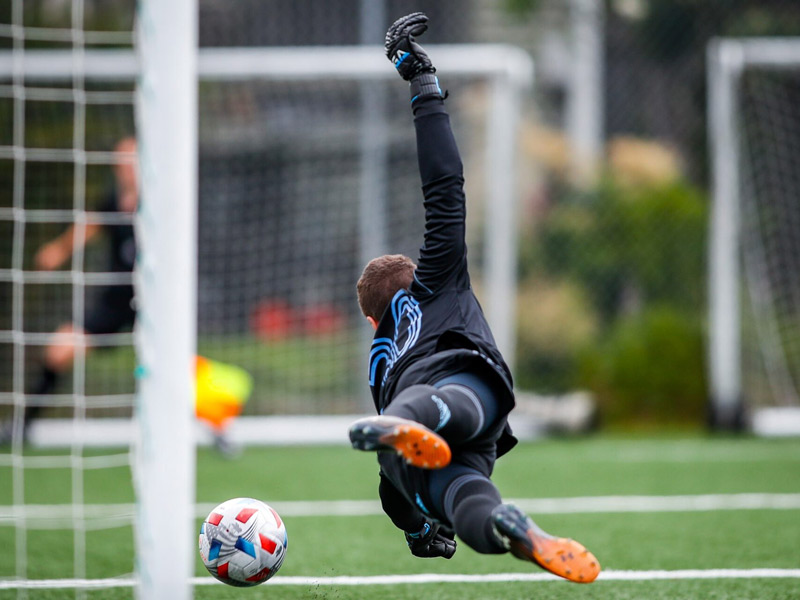Soccer is more than just a game; it is a tapestry woven with long-established rivalries that have shaped its history and culture. The passion displayed on the pitch often stems from a long-standing narrative that fans and players alike carry in their hearts. Understanding these rivalries is crucial not only for appreciating the sport but also for evaluating the dynamics at play during important matches. The threads of competition that run through clubs and their fanbases create a context that goes beyond tactics and player performance.
In the realm of football analysis, recognizing the historical significance of these rivalries adds depth to our understanding of the sport. The narratives that accompany matches can influence the mindset of players, impacting their ability and the outcome of games. ราคาบอล By exploring the historical elements that fuel these rivalries, we can gain insights that enhance our understanding and analysis of football. Each matchup encapsulates decades, sometimes decades, of passion, pride, and, often, rivalry that can sway the course of more than a match, but of a club’s trajectory in the beautiful game.
Cultural Landscape of Football Rivalries
Football rivalries have strong foundations in geographical contexts, often echoing the histories and characteristics of the societies involved. Many rivalries emerged from local contentions, past occurrences, or financial competition, which heightened the enthusiasm surrounding matches. For instance, local showdowns often occur from towns or cities that have historical factions, with the games functioning as an expression for local pride. The importance of these meetings goes beyond the pitch, creating stories that fans commit in over eras.
Over the decades, rivalries have also been shaped by the development of soccer itself. The growth of competitions and the formalization of the sport led to intensified competition among clubs, which additionally sparked animosities. The advent of broadcasting and global media has allowed these factions to target wider viewers, enhancing their status and attracting new fans. Historical matches have become touchstones for teams, with previous matches recalled in the minds of followers, adding depths to the continuing competitiveness.
Moreover, external elements such as social tensions, changes in societal dynamics, and transitions in economic power can also influence factions. For example, traditional rivalries have often echoed broader societal issues, where games come to represent larger struggles beyond football. This connection of football and history makes factions not just about wins and failures, but about the stories and identities that characterize clubs and their supporters. Understanding this context is vital for any thorough soccer analysis, as these factions are central to the rich mosaic of the game.
Influence of Competitions on Squad Performance
Competitions in soccer can considerably boost the capabilities of squads during critical matches. Players often find additional motivation when going up against traditional rivals, driving them to display their maximum potential. This heightened psychological intensity can lead to superior concentration and resolve, enabling clubs to perform at standards that may exceed their usual performances. The stress of competitive games can serve as a stimulus for remarkable performances, thrilling turnarounds, and notable performances that are engraved in the narrative of the sport.
Additionally, the psychological dimension of competitions cannot be overlooked. Teams that have a background of intense competition often enter these games with an keen understanding of previous meetings and their results. This awareness can impact strategies, line-ups, and even on-field behaviors. Coaches may customize their strategies specifically for rivalry games, predicting how rivals typically react under stress. As a result, the performance of players is shaped not only by their physical skills but also by the psychological readiness that comes from recognizing the weight of the competition.
In terms of sustained impact, ongoing competitions can nurture a culture within clubs that values competitiveness and tenacity. Teams that regularly engage in heated matches are more likely to forge a winning mentality over time. This cultural reinforcement can create legacies that strike a chord with fans, encouraging loyalty and support that enhances club morale. Ultimately, the dynamic of competition can drive clubs to reach greater success, molding not only individual performances but also the collective path of the clubs involved.
Cultural Meaning of Soccer Rivalry
Soccer rivalries extend far past the pitch, serving as cultural landmarks that echo strongly within communities. These contests often represent longstanding, regional, or class divides, reflecting the character and principles of the fans involved. The intense backing and strong commitment exhibited in these events create a collective event that binds supporters as one, reinforcing community bonds and promoting a sense of inclusion. In many situations, the significance of these rivalries goes beyond athletic competition, capturing local heritage and legacy.

Additionally, soccer rivalries often shed light on community issues and historical backgrounds that influence the experiences of those who engage in them. For instance, rivalries can stem from long-standing disputes, social inequalities, or regional distinctions, which can lead to intense emotional narratives surrounding the matches. These tales can incite fervent emotions among supporters alike, often transforming into cheers, art, and other manifestations of identity that enrich the cultural fabric of the community. The narratives built around these contests can also serve as a means to tackle profound societal themes, from togetherness to fragmentation.
Lastly, the cultural importance of soccer rivalry plays a role to the international narrative of the sport itself. As these rivalries gain global attention, they showcase local cultures and traditions to a wider audience, enhancing the global perception of football as a sport closely intertwined with community character. The media reporting surrounding these contests often showcases historical backgrounds and cultural stories to the forefront, allowing viewers from diverse backgrounds to engage and value the uniqueness of different soccer traditions. In this way, these contests not only recognize athletic drive but also strengthen the relationship of football and cultural articulation globally.